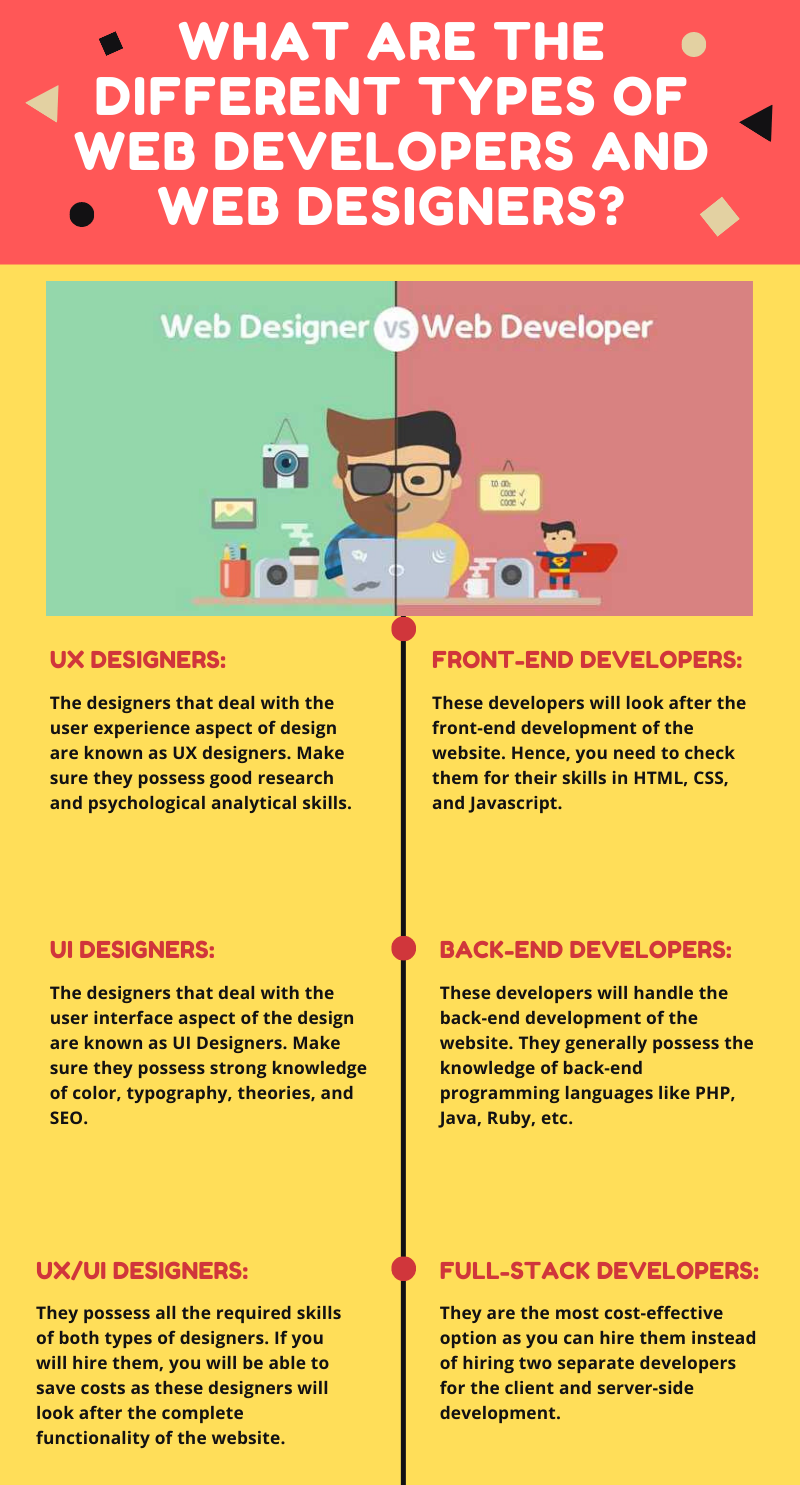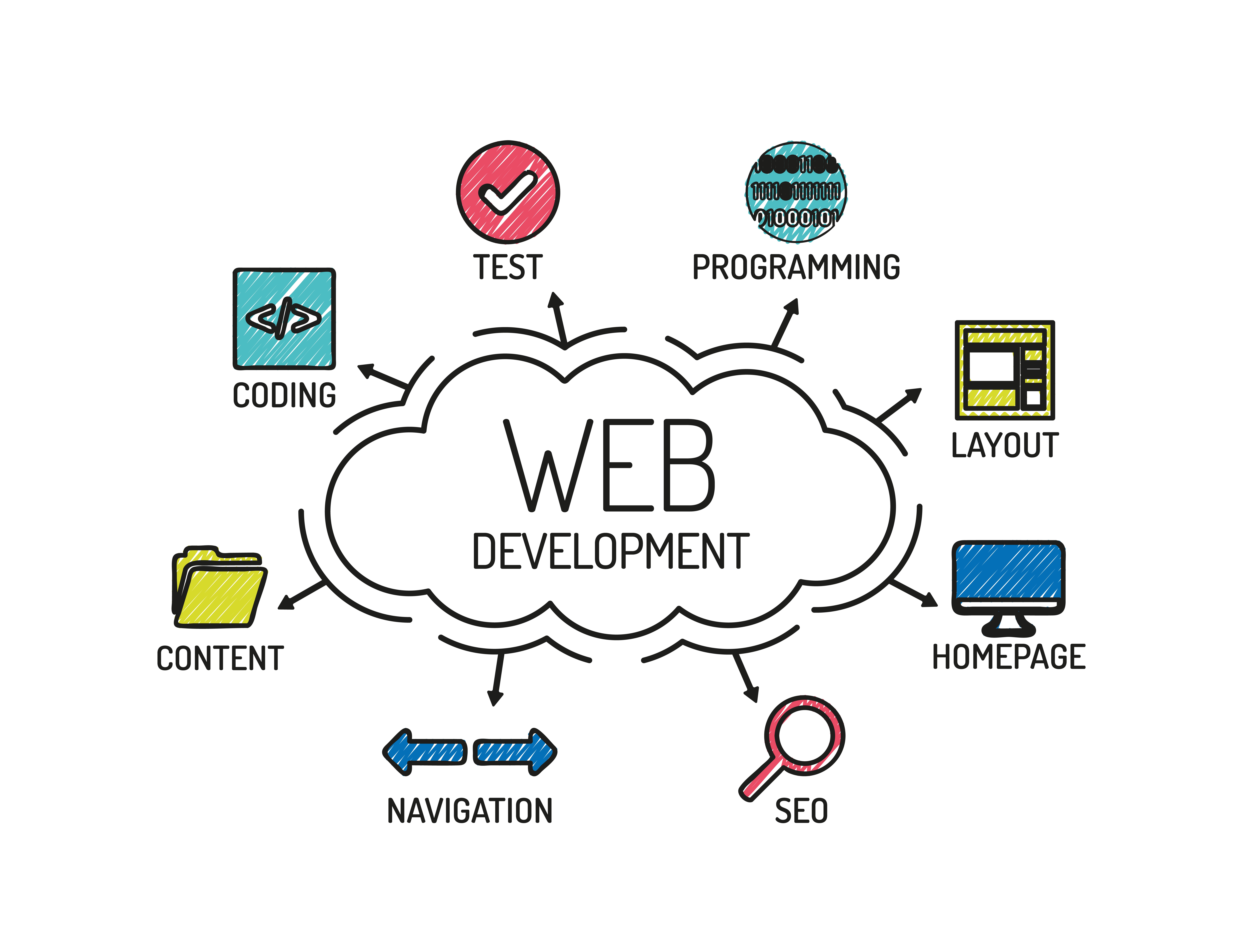Useful website design techniques to increase accessibility
Checking Out the Numerous Sorts Of Website Design and Their Unique Benefits
The landscape of website design incorporates a variety of designs, each offering distinctive benefits that accommodate various individual demands. Flat and minimalist styles stress clarity, while responsive and worldly layouts improve flexibility throughout devices. Illustrative and typography-driven approaches aim to boost engagement and emotional resonance. Recognizing these varied types can substantially influence user experience and brand assumption. What exists underneath the surface of these design options?
Minimal Web Design

Minimal Web style commonly includes a minimal shade palette and simple typography, which not only improves appearances but additionally strengthens brand identity. The minimized intricacy can result in much faster loading times, further boosting user contentment. Furthermore, by reducing aesthetic clutter, individuals can engage with web content much more properly, leading to boosted comprehension and retention. Overall, minimalist Web design cultivates a seamless individual experience, making it a preferred choice for brand names aiming to share clarity and professionalism in their on-line presence.
Responsive Website Design
Receptive Web style has ended up being important in today's digital landscape, making certain mobile compatibility for individuals throughout various gadgets. This method considerably boosts customer experience by supplying smooth navigation and ease of access, no matter screen dimension. As even more people access the Web on tablets and smart devices, the value of responsive design remains to expand.

Mobile Compatibility Value
As smart phone use proceeds to climb, guaranteeing web sites are suitable with different display dimensions has become vital for effective communication and engagement. Mobile compatibility, often accomplished via responsive Web design, allows web sites to adjust flawlessly to smart devices, tablet computers, and other gadgets. This versatility not only reaches a more comprehensive audience but likewise enhances brand name credibility. An internet site that works well on mobile phones mirrors professionalism and trust and focus to individual needs. Additionally, online search engine prioritize mobile-friendly sites in their positions, making compatibility a crucial element for on the internet presence. By investing in mobile compatibility, businesses can enhance their digital presence and cater to the expanding variety of users that access info on the move. Prioritizing mobile-responsive layout is crucial in today's digital landscape.
Improved Customer Experience

Flat Design
Flat layout is a minimal method to Web style that highlights simpleness and clarity. By removing three-dimensional aspects such as shadows, appearances, and gradients, flat style produces a visually enticing interface that focuses on material and functionality. This style advertises an intuitive navigation experience, as customers can rapidly determine essential functions and activities without distraction.
One of the primary benefits of level design is its responsiveness throughout various devices and screen dimensions. Its clean lines and straightforward designs adjust effortlessly, ensuring a constant experience for individuals on mobile, tablet, or desktop systems. In addition, flat design typically integrates vibrant colors and typography, enhancing aesthetic effect and brand acknowledgment.
The simplicity intrinsic in level style leads to faster packing times, which contributes favorably to individual satisfaction. On the whole, level layout stays a prominent option for modern Web advancement, straightening with modern aesthetic choices while providing excellent usability
Material Style
Product Design stands for a layout language created by Google that concentrates on producing a natural and user-friendly user experience throughout digital platforms. This strategy stresses the usage of grid-based formats, receptive animations, and depth effects such as illumination and darkness, which aid to create a feeling of pecking order and spatial connections. By imitating the physical world, Product Style allows customers to engage with electronic interfaces in a much more all-natural and engaging fashion.
Among the key advantages of Material Design is its adaptability throughout various devices and display dimensions, ensuring a constant experience for users. Additionally, it advertises a clear visual language that enhances use, making it easier for individuals to navigate intricate applications. The unification of vibrant shades and strong typography also plays a vital function in attracting focus to crucial elements, thus improving general user engagement - website design. Consequently, Product Style has actually ended up being a popular choice among designers seeking to produce aesthetically appealing and functional internet sites
Typography-Driven Style
Typography-Driven Layout concentrates on the tactical usage of kind to boost the useful and aesthetic aspects of a web site. This style technique prioritizes fonts, font dimensions, spacing, and pecking order to develop aesthetic passion and overview user experience. By thoroughly picking typography, designers can communicate brand identification and evoke feelings, making the web content much more accessible and appealing.
Reliable typography improves readability and use, ensuring that users can conveniently take in and navigate the website details. The ideal mix of type can likewise establish a clear aesthetic hierarchy, allowing individuals to swiftly identify essential messages and calls to activity.
A typography-driven strategy can be adapted to various devices, making sure consistency throughout systems. This flexibility is necessary in today's multi-device landscape, where individual experience is extremely important. Eventually, Typography-Driven Design serves not only as an artistic selection however also as a functional element that greatly impacts a site's efficiency.
Illustrative Website Design
Illustrative Web layout employs visual narration techniques that can substantially enhance individual engagement. By incorporating special pictures, websites can create a remarkable brand identity that resonates with their target market. This technique not only mesmerizes site visitors however additionally connects messages in a visually engaging manner.
Visual Narration Techniques
A wide variety of Web developers employ aesthetic storytelling techniques to produce interesting and immersive user experiences. This strategy combines typography, images, and layout try this web-site to narrate a tale that resonates with customers on a psychological level. By incorporating compelling visuals, designers can efficiently communicate messages and evoke sensations, directing site visitors via a brand name's journey. Infographics, computer animations, and interactive aspects serve to enhance stories, making complex details a lot more remarkable and accessible. In addition, aesthetic narration can develop a cohesive brand identity, as consistent images and motifs reinforce core values and messages. Ultimately, this strategy not just mesmerizes customers yet also cultivates a much deeper link with the content, motivating expedition and retention. With knowledgeable application, visual narration changes standard Web experiences into meaningful and dynamic interactions.
Enhancing Individual Involvement
Reliable website design considerably boosts user interaction by leveraging illustratory elements that draw attention and foster communication. Illustrations can streamline complicated ideas, making them much more remarkable and approachable for customers. They damage the uniformity of text-heavy visit our website web pages, creating visual breaks that invite expedition. On top of that, distinct images can evoke feelings, urging customers to get in touch with the material on a much deeper degree. Interactive aspects, such as computer animations or hover effects, can likewise boost interaction by inviting individuals to get involved proactively instead of passively taking in info. This strategy not just maintains site visitors on the site much longer but likewise enhances the chance of return brows through. Inevitably, reliable illustratory Web design transforms the individual experience, making it a lot more satisfying and impactful.
Branding Through Image
Aesthetic components play a considerable function in shaping a brand's identification, and images are a powerful device hereof. Illustrative Web layout allows brands to convey their one-of-a-kind character and values via personalized art work. This technique fosters a much deeper psychological link with the audience, enhancing memorability and involvement. By incorporating images, brands can distinguish themselves in a crowded market, producing a distinct visual narrative that resonates with their target market. Furthermore, illustrations can streamline intricate principles and make content much more obtainable, properly interacting messages in an interesting fashion. In general, branding through image not only enhances the customer experience yet also enhances brand acknowledgment, making it an important approach for services intending to develop a solid online visibility.
Often Asked Inquiries
Exactly how Do I Choose the Right Web Design Kind for My Business?
To choose the best website design type for a business, one ought to examine objectives, target audience, and industry requirements. Reviewing individual experience and performance will certainly direct the option procedure for ideal engagement and efficiency.
What Tools Are Ideal for Creating Different Web Style Designs?
Popular devices for creating varied Web style styles consist of Adobe XD, Figma, Map Out, and WordPress. Each deals unique functions tailored to various layout demands, making it possible for designers to construct practical and aesthetically attractive sites successfully.
Exactly How Much Does Specialist Web Design Commonly Price?
Professional website design commonly costs in between $2,000 and $10,000, depending on complexity, attributes, and designer competence. Personalized options and continuous maintenance may increase costs, while layouts can use more affordable alternatives for easier tasks.
Can I Incorporate Several Website Design Types Efficiently?
Yes, incorporating several Web style types can be reliable. By incorporating components from various designs, designers can create one-of-a-kind, appealing customer navigate to this website experiences that satisfy varied target markets while enhancing functionality and aesthetic charm.
How Do Design Trends Influence User Experience and Engagement?
Layout trends considerably affect customer experience and involvement by enhancing visual appeal, enhancing navigation, and cultivating psychological connections - web design. Remaining updated with patterns allows designers to create instinctive interfaces that resonate with individuals and encourage long term communications
Level and minimal layouts highlight clearness, while receptive and material layouts enhance convenience throughout tools. It may seem counterintuitive, minimal Web style highlights simplicity to enhance customer experience. Receptive Web style plays a necessary function in boosting customer experience by making certain that an internet site adapts flawlessly to various screen sizes and tools. Flat layout is a minimalist technique to Web style that stresses simplicity and quality. Product Style stands for a design language created by Google that focuses on producing a cohesive and user-friendly user experience across electronic platforms.